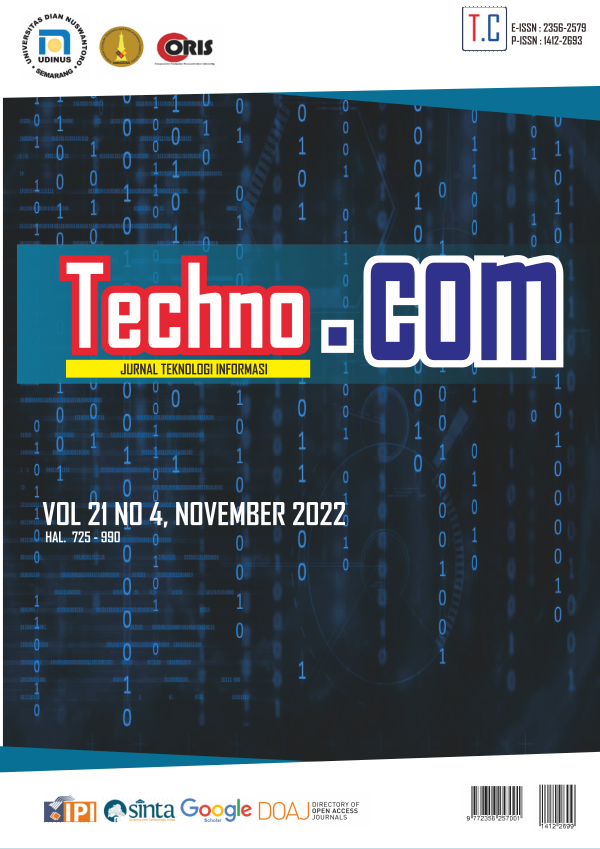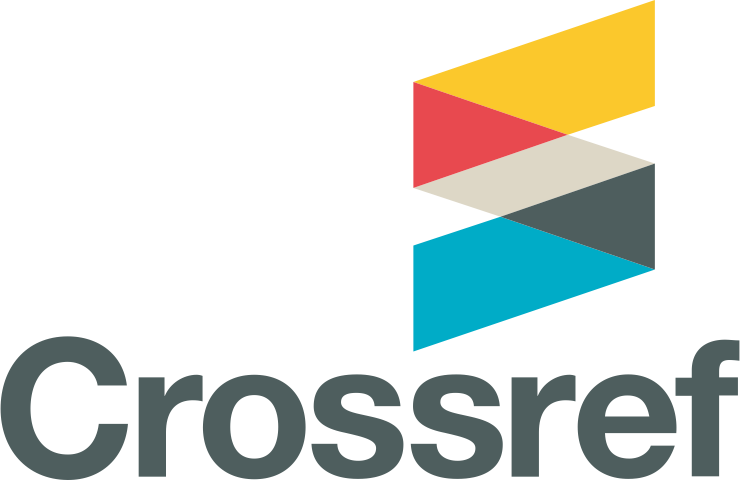Analisis Rekomendasi Produk Berdasarkan Segmentasi Pelanggan Menggunakan Algoritma DBSCAN dan FP-Growth
DOI:
https://doi.org/10.33633/tc.v21i4.6697Keywords:
Customer Segmentation, DBSCAN, FP-Growth, Product Recommendation, RFMAbstract
Supermarket 212 Mart is a retail business based on sharia cooperatives that has implemented strategy to retain customers. But there is still a drawback, which is just seeing based on the amount of money spent regardless of recency and frequency. In addition, in offering products, 212 Mart does not yet have the right reference. This research combines RFM analysis into data mining techniques to provide more product recommendations good. Parameters considered are customer RFM value, customer segment, and product which are often purchased simultaneously within 1 year of member transaction data using an algorithm DBSCAN and FP-Growth. In customer segmentation, obtained 5 clusters and 31 noise data with an Eps value of 0.060, MinPts 3 and an SI value of 0.4222. Association results using 30% minsup and minconf 70% resulted in cluster 1 having 7 rules, cluster 2 having 6 rules, cluster 3 having 10 rules, cluster 4 has 2 rules, and cluster 5 has 6 rules. The rules formed can be used to direct marketing by recommending products to their respective customers clusters.References
U. Khairunnisa, "Penerapan algoritma fp-growth untuk penentuan pola pada data transaksi terbak berdasarkan teknik clustering," Universitas Islam Negeri Sultan Syarif Kasim Riau, Pekanbaru, 2020.
T. A. A. Sandi, M. Raharjo, J. L. Putra and R. Ridwan, "Clustering kesetiaan pelanggan dengan model rfm (recency, frequency, monetary) dan k-means," Journal of Computing and Information System, pp. 14(2), 239–246, 2018.
A. Jaini, "Penerapan algoritma fuzzy c-means dan k-medoids untuk pengelompokan penjualan dan strategi pemasaran produk," Universitas Islam Negeri Sultan Syarif Kasim, Pekanbaru, 2019.
W. A. Triyanto, "Association rule mining untuk penentuan rekomendasi promosi produk," Simetris: Jurnal Teknik Mesin, Elektro dan Ilmu Komputer, pp. 5(2), 121–126, 2014.
E. W. X. L. d. C. D. C. Ngai, "Application of data mining techniques in customer relationship management: A literature review and classification," Expert systems with applications, pp. 36(2), 2592–2602, 2009.
F. M. M. R. D. O. N. F. H. B. N. P. d. M. S. Hadi, "Penerapan k-means clustering berdasarkan rfm mofek sebagai pemetaan dan pendukung strategi pengelolaan pelanggan (studi kasus:Pt. herbal penawar alwahidah indonesia pekanbaru)," SITEKIN: Jurnal Sains, Teknologi dan Industri, pp. 15(1), 69–76, 2017.
T. S. S. d. H. R. Hardiani, "Segmentasi nasabah tabungan menggunakan model rfm (recency, frequency, monetary) dan k-means pada lembaga keuangan mikro," in Seminar nasional teknologi informasi dan, 2015.
M. T. d. M. L. Furqon, "Clustering the potential risk of tsunami using density-based spatial clustering of application with noise (dbscan).," Journal of Environmental Engineering and Sustainable Technology, pp. 3(1), 1–8, 2016.
K. C. C. C. C. L. D. P. d. Y. Y. Kelvin, "Customer churn’s analysis in telecomunications company using fp-growth algorithm: Customer churn’s analysis in telecomunications company using fp-growth algorithm," Jurnal Mantik, pp. 4(2), 1285–1290, 2020.
D. Birant, "Data mining using rfm analysis," in IntechOpen, 2011.
I. H. A. d. F. M. Z. Syukra, "Implementation of k-medoids and fp-growth algorithms for grouping and product offering recommendations," Indonesian Journal of Artificial Intelligence and Data Mining, p. 107–115, 2019.
Downloads
Published
Issue
Section
License
Copyright (c) 2022 Siti Monalisa Monalisa, Dewi Anjainah Anjainah

This work is licensed under a Creative Commons Attribution-NonCommercial 4.0 International License.
License Terms
All articles published in Techno.COM Journal are licensed under the Creative Commons Attribution-NonCommercial 4.0 International (CC BY-NC 4.0). This means:
1. Attribution
Readers and users are free to:
-
Share – Copy and redistribute the material in any medium or format.
-
Adapt – Remix, transform, and build upon the material.
As long as proper credit is given to the original work by citing the author(s) and the journal.
2. Non-Commercial Use
-
The material cannot be used for commercial purposes.
-
Commercial use includes selling the content, using it in commercial advertising, or integrating it into products/services for profit.
3. Rights of Authors
-
Authors retain copyright and grant Techno.COM Journal the right to publish the article.
-
Authors can distribute their work (e.g., in institutional repositories or personal websites) with proper acknowledgment of the journal.
4. No Additional Restrictions
-
The journal cannot apply legal terms or technological measures that restrict others from using the material in ways allowed by the license.
5. Disclaimer
-
The journal is not responsible for how the published content is used by third parties.
-
The opinions expressed in the articles are solely those of the authors.
For more details, visit the Creative Commons License Page:
? https://creativecommons.org/licenses/by-nc/4.0/
















